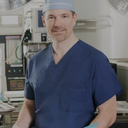Transumbilical augmentation has been popularized by the idea that the scar and incision is placed in the belly button area and therefore "hidden" from the breast area. Only saline implants can be placed with this method as the "track" from the belly button to the breast has to accomodate a small object (the folded implant) that is then expanded. I have seen some very nice results from this technique, but I have seen some disasters.







